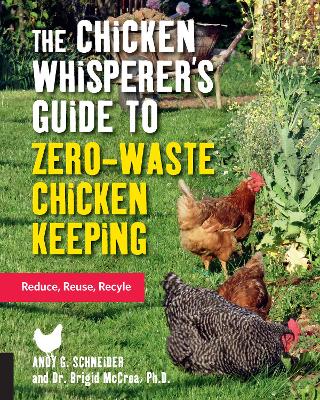Reviewed by annieb123 on
The Chicken Whisperer's Guide to Zero-Waste Chicken Keeping is a tutorial guide to chicken husbandry with the added benefit of regenerative and sustainable practices. Released 11 June 2019 by Quarto on their Quarry imprint, it's 120 pages and available in paperback and ebook formats.
The book is beautifully photographed and the well written tutorial instructions support and expand the photography. It's laid out logically and accessibly in rough chronological order, from buying or hatching chicks, raising them to adulthood, and harvesting eggs/meat (no meat harvesting tutorial or photos included). There's a discussion of meat vs. egg laying breeds and how to source chickens for different purposes.
The book continues with reducing waste for feeding, housing, and keeping a flock. This includes composting, feeding alternatives, repurposing/reusing/recycling and more. There's a good trouble-shooting guide with concrete examples of what to do when chickens stop laying, how to make soup stock, acquiring and raising new flocks and more.
This isn't a one-size-fits-all guide to chicken keeping. The poultrist will want to source other info and have other books available for more general husbandry questions or problems; they're beyond the scope of this book. For what it is, though, this book has a lot of good tips for reducing waste.
Reducing our carbon footprints and conserving our dwindling resources is vital if we're to have any chance of survival. Every bit helps. This book is a good source of tips for doing just that.
Four stars.
Disclosure: I received an ARC at no cost from the author/publisher for review purposes.
Reading updates
- Started reading
- Finished reading
- 13 June, 2019: Reviewed
